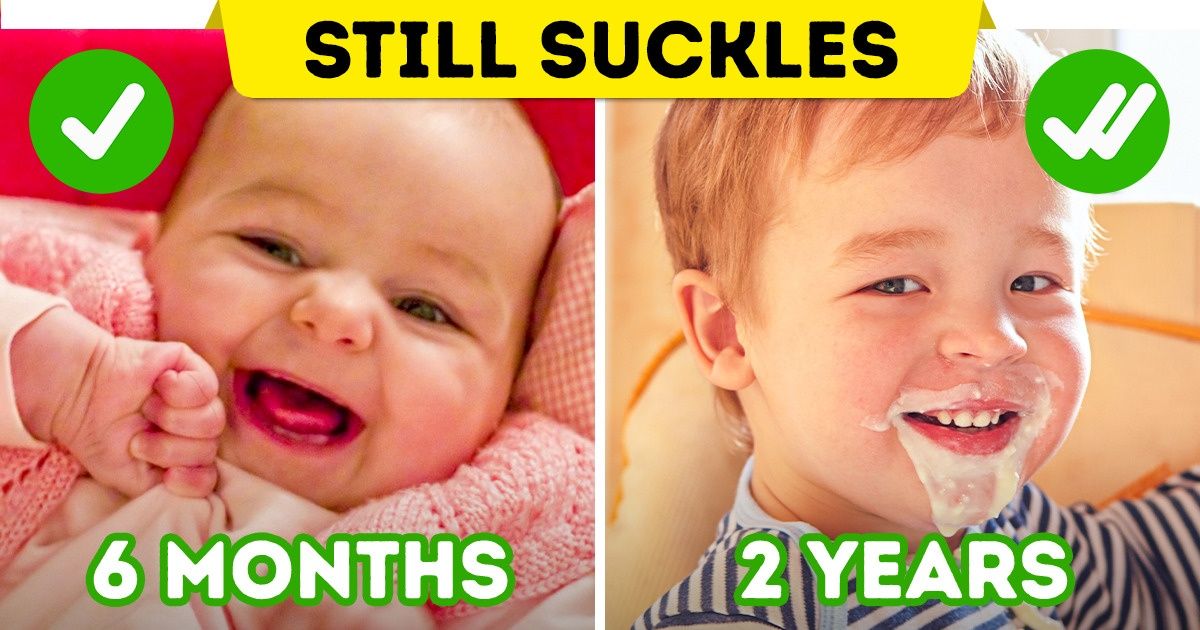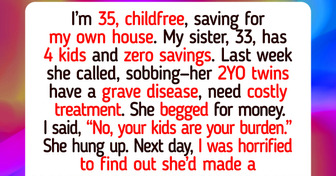20 Girls Who Changed One Tiny Thing in Their Appearance and Now Look Like a Million Bucks


There are beliefs that can cause a mother to abandon breastfeeding prematurely or engage in wrong practices that make it more difficult for her. However, breastfeeding is vital: it brings many benefits to the baby’s health and strengthens the bond it has with its mother. In fact, breast milk is recommended as an exclusive food for the first 6 months and up to 2 years of age with complementary foods. That’s why it is crucial to weed through some false beliefs about the act.
At Bright Side, we wanted to debunk a number of myths that often circulate about breastfeeding, which can help nursing mothers make more informed decisions. However, it’s important to always consult each individual case with your primary care physician.
During the first weeks, it’s recommended to breastfeed the baby every time they ask for it, either during the day or at night, and this can be from every hour to every 3 hours. This is because newborns are constantly hungry since their stomachs are small and because breast milk is easily digested.
In addition, frequent breastfeeding will help milk production. As your baby grows, he or she will develop a more regular and predictable schedule.
Although it’s true that breastfeeding is a natural process, it’s also a skill that needs to be developed. And it can be complicated to do so, as there may be some inconveniences, such as pain in the breast, frustration, or weak suckling on the baby’s part who must learn to feed.
To achieve healthy and calm breastfeeding, the mother needs to know the different breastfeeding positions. The baby must learn to latch on well to the breast and, if necessary, the help of a breastfeeding professional should be sought.
The best way to produce breast milk is to breastfeed regularly. The breasts produce milk in response to the baby’s suckling, and the more the baby suckles, the more milk the mother will produce. In addition, emptying the breasts at each feeding will also help increase production (while the newborn is feeding).
To have the energy and nutrients the body needs to produce milk, the mother may have to eat a little more than normal: between 330 and 400 additional calories a day, coming from a varied and protein-rich diet, consisting of products such as lean meats, eggs, dairy products, vegetables and fish, and seafood with low mercury content, as well as whole grains, fruits, and vegetables.
As mentioned above, it’s recommended to breastfeed exclusively for up to 6 months and, after adding complementary feeding, up to 2 years or more. According to experts, breast milk continues to provide benefits for both mother and child, even after 2 years of age, and it’s up to them to decide when to end this process.
When a mother who is breastfeeding her child becomes pregnant again and decides not to interrupt breastfeeding so that once the new baby is born she can breastfeed both of them, what is known as tandem nursing occurs. This is a fact that, according to current scientific evidence, is very unlikely to affect the development of the pregnancy, the fetus, or the child.
When a woman breastfeeds exclusively, she stops ovulating naturally, and when she doesn’t ovulate, she can’t become pregnant. This method is known as the lactational amenorrhea method (LAM), and if done correctly, it can be almost as effective as a hormonal contraceptive.
But it’s very important to keep in mind that this method will not prevent pregnancy if the baby is fed anything other than breast milk or if a breast pump is used. Also, it can only be used as birth control for the first 6 months of the baby’s life or until the menstrual period returns.
When the body is exposed to strong emotions, such as stress or fear, it produces hormones as a natural survival reflex, including adrenaline, noradrenaline, and cortisol, which may block milk production, but only momentarily.
As soon as the mother puts the baby back to the breast, milk will start to be produced again.
In the case of mild illnesses and infections, by the time the mother develops symptoms, the baby will already have been exposed to the illness, so it’s advisable to continue breastfeeding to provide extra protection through breast milk.
On the other hand, most medications are compatible with breastfeeding and are safe to take while breastfeeding. However, there are a small number of medications that aren’t safe, so it’s best to always consult your primary care physician.
The shape and size of the breasts will be influenced by the extent to which fatty deposits develop on the outside. For this part, the glandular tissue, which is responsible for producing milk, is inside the breasts and develops independently. Therefore, neither the size nor the external shape of the breast influences the mother’s ability to breastfeed.
Do you know of any other breastfeeding myths that have been debunked? Maybe it could be useful for our mommy readers. Share what you know in the comment section.











